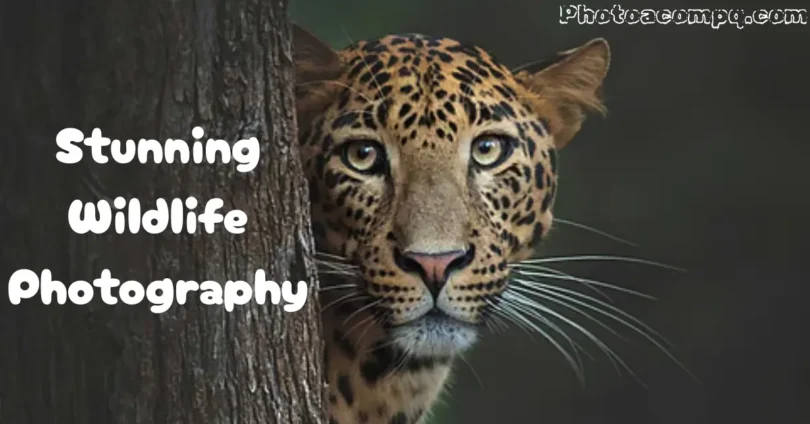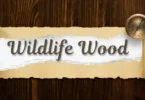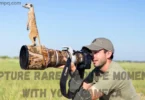Stunning Wildlife Photography is more than just taking pictures of animals it is about capturing the true beauty of nature in its purest form. Every photograph tells a story of life in the wild from the powerful roar of a lion to the gentle flight of a butterfly. Wildlife photography connects us to the wonders of the animal world, showing moments that many people may never see with their own eyes. With patience, the right skills, and respect for nature, anyone can learn how to create stunning wildlife photographs that inspire, educate, and bring us closer to the natural world.
Wildlife Photography Basics
Before starting, it is important to know what makes wildlife photography different from other types of photography. Here are the key basics:
- Patience is Key: Animals do not pose for pictures. Waiting quietly and observing is crucial.
- Observation Skills: Learn animal behavior, their movements, and habitats to predict the perfect moment.
- Connection with Nature: Wildlife photography is not just about photos; it is about respecting and understanding nature.
Wildlife photography combines art and science. A good photographer needs technical skills, creative vision, and a lot of patience to capture rare and magical moments in the wild.
Essential Gear for Wildlife Photography
Having the right gear makes a big difference in capturing stunning wildlife photographs. Here are the most important tools:
- Cameras: DSLR or mirrorless cameras work best for clear, high-quality photos.
- Lenses: Telephoto lenses (200mm–600mm) are essential for capturing distant animals.
- Tripods and Monopods: Help in stabilizing the camera for sharp images.
- Binoculars: Useful to spot wildlife from afar.
- Protective Gear: Rain covers and camera bags to protect equipment in the wild.
Beginner photographers can start with a basic camera and a zoom lens. Over time, upgrading gear will help capture better and more detailed images.
Mastering Camera Settings for Perfect Shots
Correct camera settings can make the difference between a good photo and a stunning wildlife photograph.
- Shutter Speed: Fast-moving animals need high shutter speeds (1/1000 sec or faster).
- Aperture: Use a wide aperture (f/2.8–f/5.6) for blurry backgrounds and sharp focus on the animal.
- ISO: Adjust ISO depending on light conditions. Lower ISO for bright daylight, higher ISO for forests or cloudy days.
- Continuous Shooting Mode: Capture multiple frames quickly to catch the perfect moment.
Experimenting with different settings will help you understand how to capture the perfect wildlife shot in every situation.
Choosing the Right Location and Timing
Where and when you take photos is very important in wildlife photography.
- Best Locations: National parks, wildlife reserves, forests, and lakes.
- Timing: Animals are usually active early in the morning and late in the evening.
- Seasonal Considerations: Certain animals are more visible in specific seasons. For example, migratory birds in winter or baby animals in spring.
Knowing where and when to go helps photographers capture rare and natural moments of wildlife.
Approaching Animals with Care and Respect
Wildlife photography requires careful and ethical approaches.
- Keep Distance: Avoid disturbing animals. Use telephoto lenses instead of getting too close.
- Stay Quiet: Sudden noise can scare animals away.
- Do Not Feed or Touch: Feeding wildlife can harm them and change their natural behavior.
- Blend With Nature: Wear neutral colors and use natural cover to avoid being noticed.
Respecting animals ensures safety for both the photographer and wildlife while allowing natural behavior to be captured.
Techniques for Capturing Stunning Shots
Wildlife photography requires skill and creativity. Some techniques to try include:
- Action Shots: Capture animals running, flying, or hunting. Use fast shutter speed.
- Close-Ups: Focus on faces, eyes, and details to show emotion.
- Composition: Use rule-of-thirds, leading lines, and natural framing for professional-looking shots.
- Storytelling: Try to tell a story with a single image, like a bird feeding its young or a predator hunting.
Experimenting with angles, perspectives, and compositions can help create unique and stunning photos.
Lighting in Wildlife Photography
Lighting can make or break a photograph. Natural light is your best friend in wildlife photography.
- Golden Hour: Early morning or late evening light gives a soft, warm glow.
- Avoid Harsh Midday Light: Midday sun can create harsh shadows and bright highlights.
- Low-Light Photography: Use a higher ISO and wider aperture when shooting in dense forests or cloudy weather.
Understanding and using natural light will enhance the mood, texture, and details of wildlife photos.
Editing Wildlife Photos for Best Results
Editing is the final step to make photos look professional while keeping them natural.
- Basic Adjustments: Brightness, contrast, and cropping to improve composition.
- Color Correction: Adjust colors carefully to reflect real-life tones.
- Avoid Over-Editing: Do not make the photo look fake or unnatural.
- Software Tools: Lightroom, Photoshop, and Snapseed are popular for beginners and professionals.
Editing helps highlight the beauty of wildlife without altering its natural essence.
Ethical Side of Wildlife Photography
Ethics are extremely important in wildlife photography.
- Do No Harm: Avoid any actions that can harm animals or their habitats.
- Respect Privacy: Some wildlife areas have rules; follow them strictly.
- Promote Conservation: Share photos to educate people about protecting nature.
Ethical photography ensures the long-term survival of wildlife and preserves natural ecosystems for future generations.
Famous Wildlife Photographers for Inspiration
Learning from experts can improve your skills. Some famous wildlife photographers include:
- Art Wolfe: Known for capturing landscapes and animals beautifully.
- Frans Lanting: Focuses on wildlife behavior and storytelling.
- Paul Nicklen: Specializes in polar wildlife and conservation photography.
- Annie Griffiths: Combines human and wildlife stories in her photos.
Studying their work can inspire creativity and technique improvements.
Building a Wildlife Photography Portfolio
A portfolio showcases your skills and growth as a wildlife photographer.
- Collect Your Best Work: Select your top 20–30 images.
- Organize by Theme: Group animals, birds, landscapes, or habitats.
- Share Online: Use Instagram, personal blogs, or photography communities.
- Portfolio for Career: Helps in competitions, exhibitions, and freelance opportunities.
A portfolio is essential for learning, improving, and sharing your passion with others.
Common Mistakes to Avoid in Wildlife Photography
Avoiding mistakes helps in creating better photos:
- Getting Too Close: Disturbs animals and can be dangerous.
- Wrong Settings: Using slow shutter speed for moving animals leads to blurry photos.
- Over-Editing: Too much editing can make images look fake.
- Ignoring Safety: Both for yourself and wildlife.
- Poor Timing: Missing the right light or action moment.
Learning from mistakes will make you a confident and skilled wildlife photographer.
Tips for Beginners to Start Wildlife Photography
Even beginners can create stunning photos with the right approach:
- Start Small: Begin with local parks or gardens.
- Practice Patience: Wildlife requires time and observation.
- Learn Camera Basics: Understand shutter speed, aperture, ISO, and focus.
- Use Zoom Lenses: Avoid disturbing animals by keeping distance.
- Take Notes: Record animal behavior and locations for future trips.
By starting simple and learning gradually, anyone can enjoy wildlife photography as a hobby or profession.
Common FAQs About Stunning Wildlife Photography
Some faqs of Stunning Wildlife Photography:
1. What is wildlife photography?
Wildlife photography is taking pictures of animals in their natural habitats while capturing their behavior and environment.
2. Do I need expensive equipment?
Not necessarily. Beginners can start with a simple camera and upgrade over time.
3. How do I find animals to photograph?
Visit parks, reserves, forests, or lakes, and observe animal habits carefully.
4. What time is best for wildlife photography?
Early mornings and late evenings, known as golden hours, are best for natural lighting.
5. How can I get close to animals safely?
Use telephoto lenses and stay quiet. Never try to touch or feed animals.
6. Is editing necessary?
Yes, basic editing helps enhance photos, but over-editing should be avoided.
7. How can I improve my skills?
Practice regularly, study animal behavior, and learn from experienced photographers.
8. Can beginners take professional photos?
Yes, with patience, knowledge, and practice, beginners can capture stunning images.
9. Is wildlife photography safe?
It can be safe if you respect animals, maintain distance, and follow safety rules.
10. Can wildlife photography help conservation?
Absolutely, Stunning photos can educate people, raise awareness, and inspire conservation efforts.
Conclusion
Stunning Wildlife Photography is a beautiful way to connect with nature, tell stories, and inspire others. It requires patience, respect, skill, and creativity. From understanding animal behavior to mastering camera settings, ethical approaches, and proper editing, every step is important.
Wildlife photography is not just a hobby; it is a way to celebrate life, protect animals, and preserve the environment. Whether you are a beginner or an experienced photographer, the joy of capturing a rare moment in the wild is unmatched. Start your journey today, and let every click tell the story of the wild world around us.



